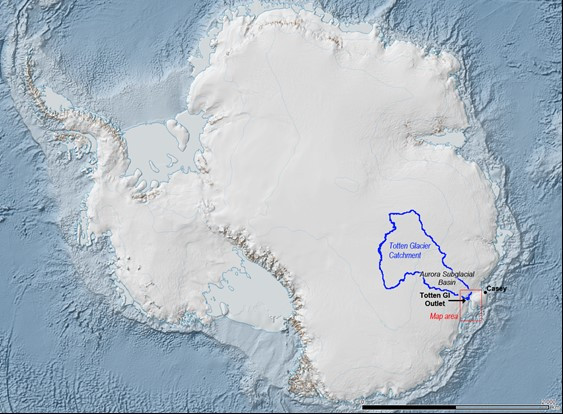Antarctic's massive Totten Glacier nearing 'tipping point' in global warming warn scientists

Global warming is threatening to trigger the catastrophic collapse of East Antarctica's massive Totten Glacier and in turn raise sea levels to dangerous new heights, a new study warns.
East Antarctica is the world's largest area of ice. Until recently, it was considered to be far more stable than the smaller, West Antarctic ice sheet, where scientists had originally focused fears and warnings.
Now, troubling research reveals that melting Totten would make global warming reach a "tipping point" and likely collapse with just a few degrees increase in warming, warned scientist Alan Aitken of the University of Western Australia, who heads a team of researchers from the US, UK, New Zealand and Australia.
"While traditional models haven't suggested this glacier can collapse, more recent models have," said Aitken, a co-author of the study published in Nature. "We confirm that collapse has happened in the past, and is likely to happen again, if we pass a tipping point, which would occur if we had between 3 and 6 degrees of warming above present."
Agence France Presse graphically noted that Martin Siegert, of Imperial College in London and a senior author of the new study, predicted that "before the end of the century the great global cities of our planet near the sea will have a 2- or 3-metre high (6.5 to 10 feet high) sea defences all around them."
Totten's huge floating shelf of ice is 90 miles (145km) by 22 miles (35km) in area. It functions as a kind of giant plug holding back a far larger a mass of Antarctic ice. The entire region, or what scientists call a catchment - which could someday flow into the sea in the surrounding area if Totten collapses - represents an area bigger than California, notes the Washington Post. In some areas the ice is also 2.5 miles (4.0km) thick. The melted ice could then raise the world's sea level by more than 11 feet (3.5m).
In previous research scientists discovered that the underbelly of the Totten was being eroded by warm, salty sea water flowing through a valley beneath the glacier. The last time the glacier melted, boosting sea levels tremendously, was during the Pliocene epoch, 3 millions years ago, when temperatures were 2 degrees Celsius (3.6 degrees Fahrenheit) higher than they are now, and CO2 levels in the atmosphere were 400 parts per million (ppm), Siegert noted.
Sea levels during the Pliocene peaked at levels more than 10 metres (30 feet) higher than today. "We are at 400 ppm right now, and if we do nothing about climate change we're going to get 2 degrees Celsius more warming, too," Siegert warned.
The "strong evidence" that the glacier has been unstable in the past, coupled with signs that it is melting now, is "a clear warning that changes might be on the horizon," he warned.
© Copyright IBTimes 2025. All rights reserved.





















